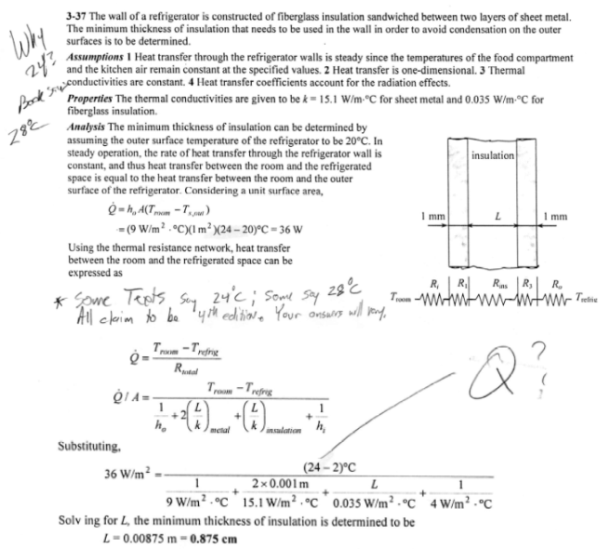The wall of a refrigerator is constructed of fiberglass insulation (k=0.035 W/mK) sandwiched between two layers of 1-mm-thick sheet metal (k=15.1 W/mK). The refrigerated space is maintained at 2 C, and the average heat transfer coefficients at the inner and outer surfaces of the wall are 4 W/m^2K and 9 W/m^2 K, respectively. The kitchen temperature averages 28 C. It is observed that condensation occurs on the outer surfaces of the refrigerator when the temperature of the outer surface drops to 20 C. Determine the minimum thickness of fiberglass insulation that needs to be used in the wall in order to avoid condensation on the outer surfaces.

The wall of a refrigerator is constructed of fiberglass insulation (k=0.035 W/mK) sandwiched between two layers of 1-mm-thick sheet metal (k=15.1 W/mK). The refrigerated space is maintained at 2 C, and the average heat transfer coefficients at the inner and outer surfaces of the wall are 4 W/m^2K and 9 W/m^2 K, respectively. The kitchen temperature averages 28 C. It is observed that condensation occurs on the outer surfaces of the refrigerator when the temperature of the outer surface drops to 20 C. Determine the minimum thickness of fiberglass insulation that needs to be used in the wall in order to avoid condensation on the outer surfaces.
